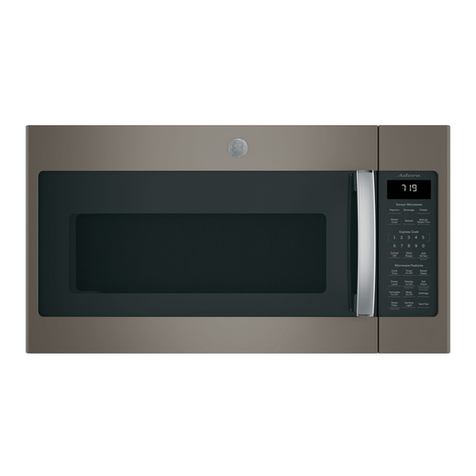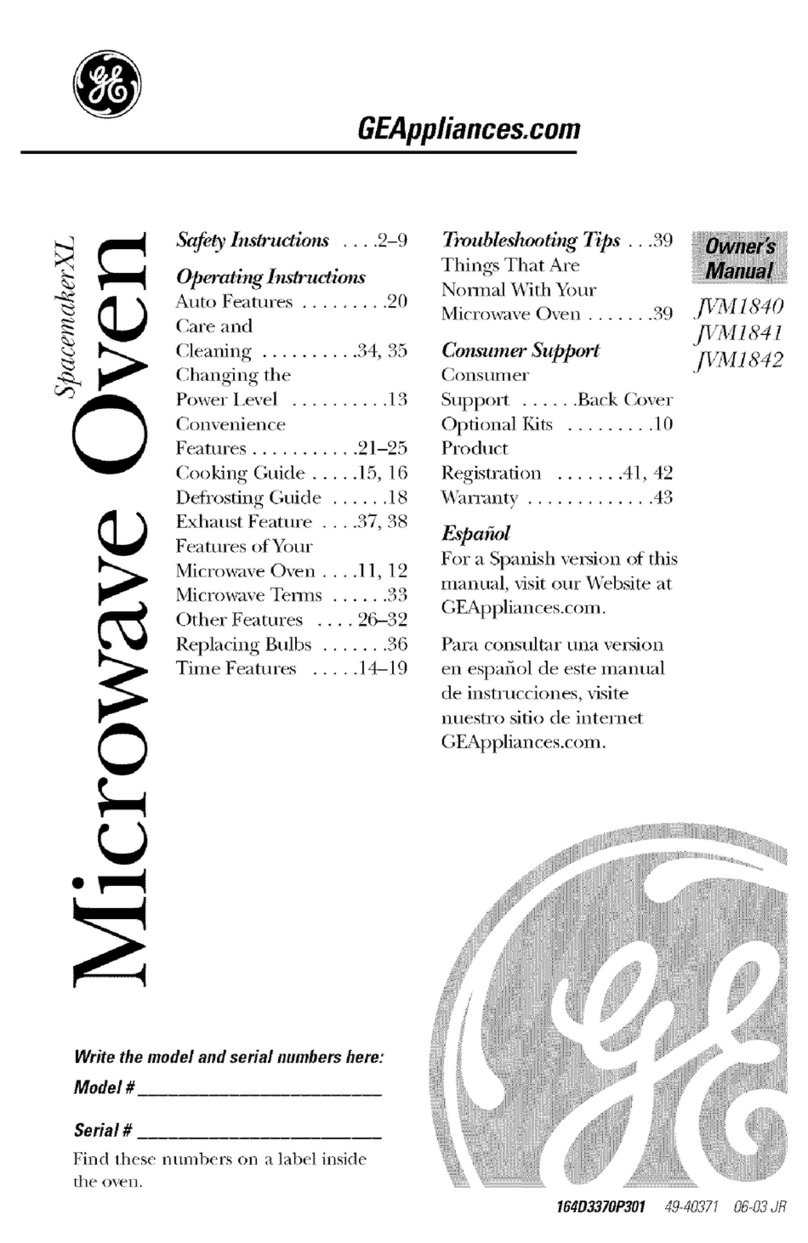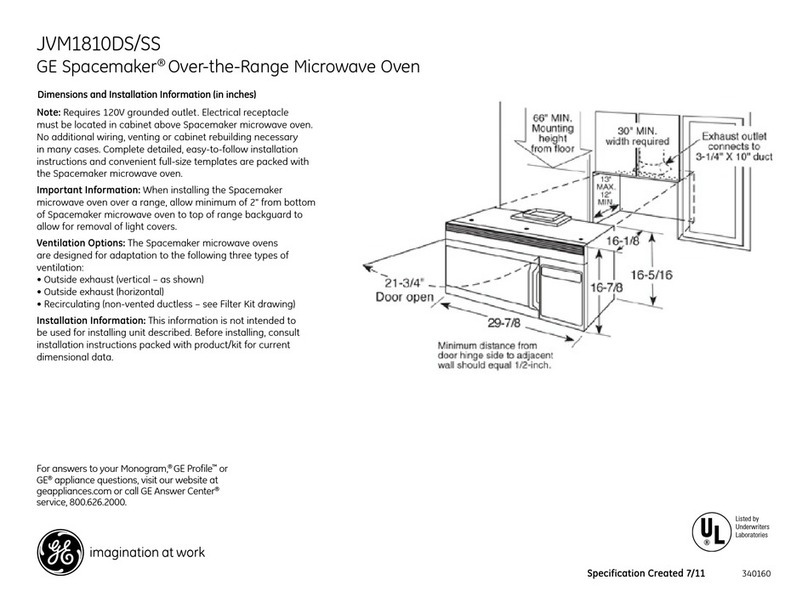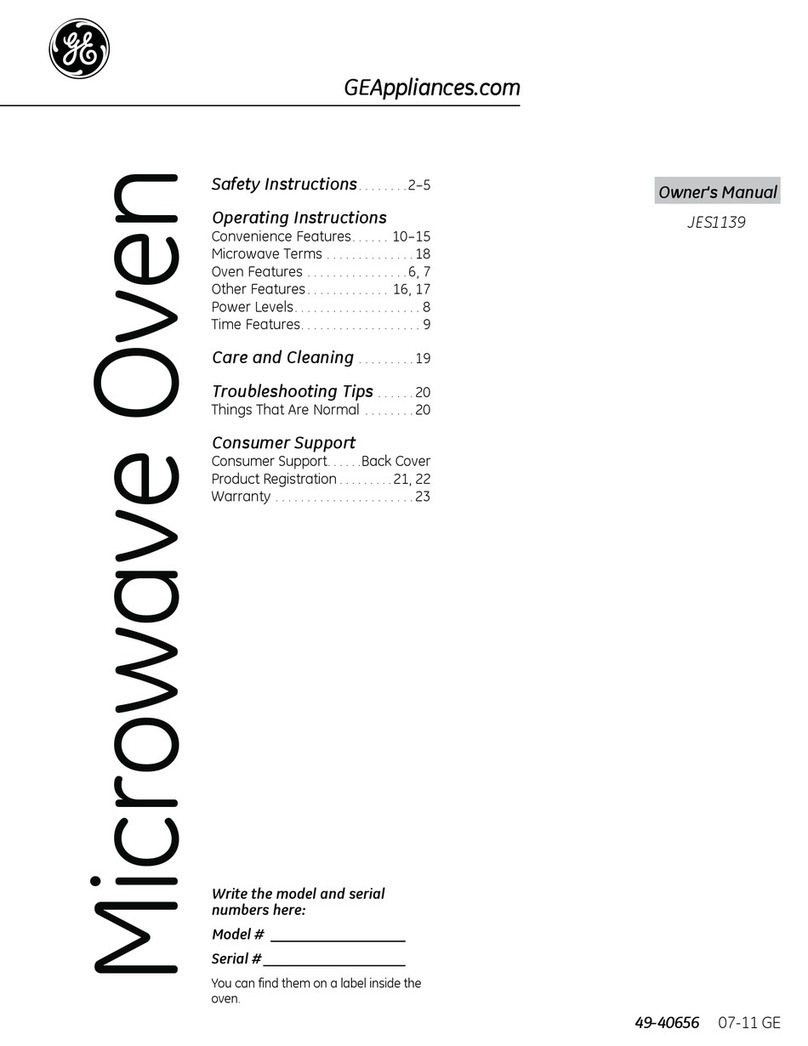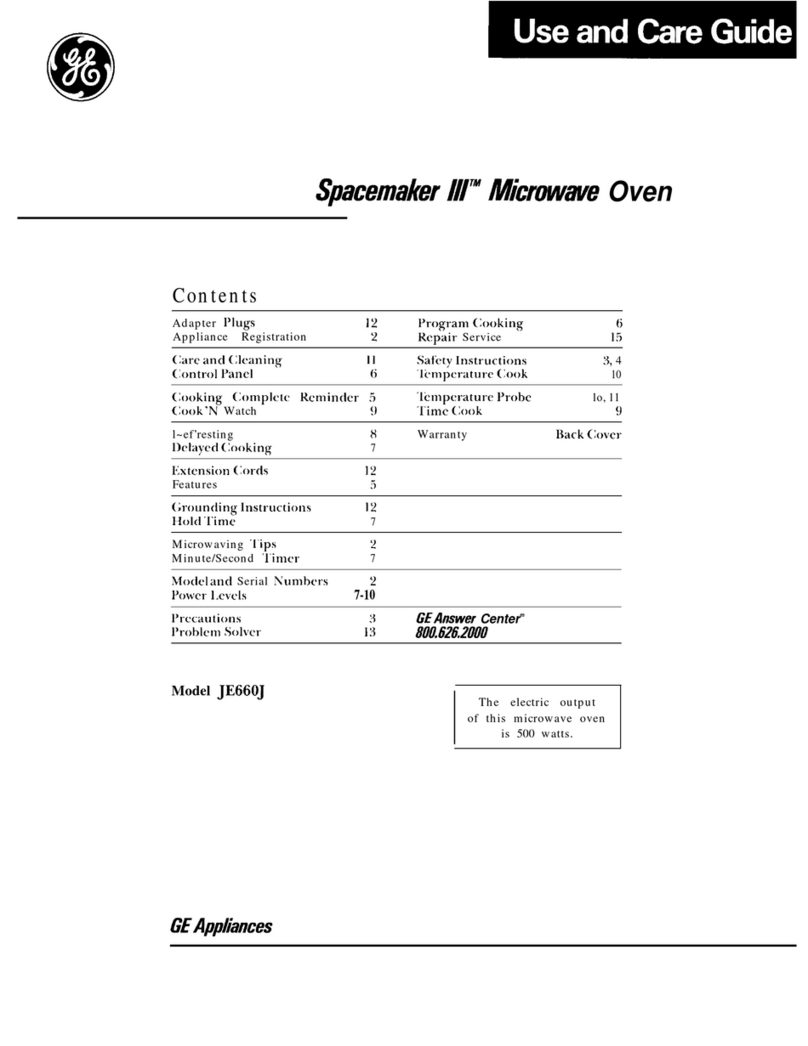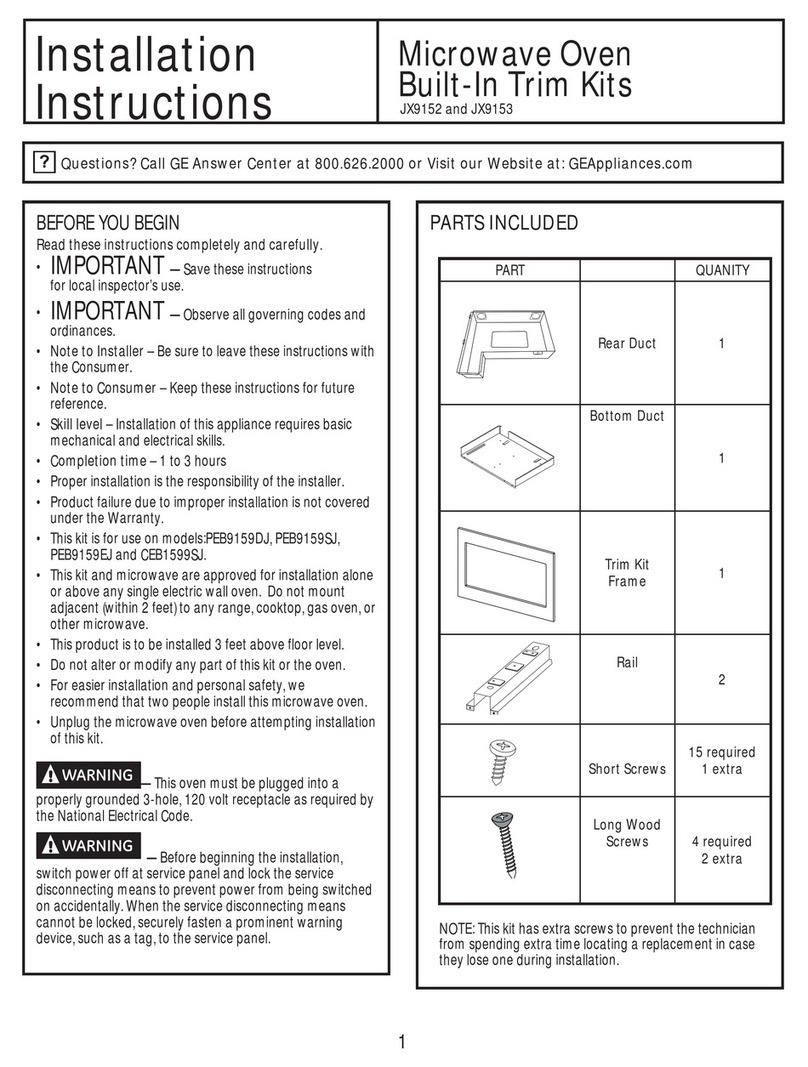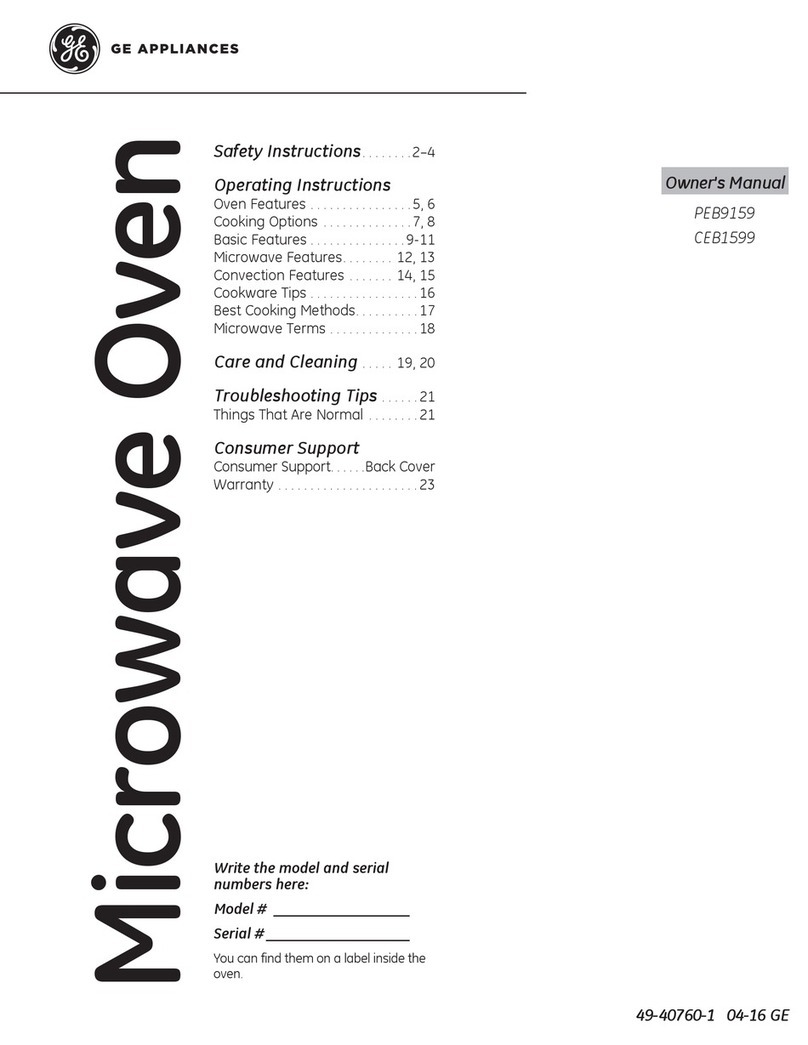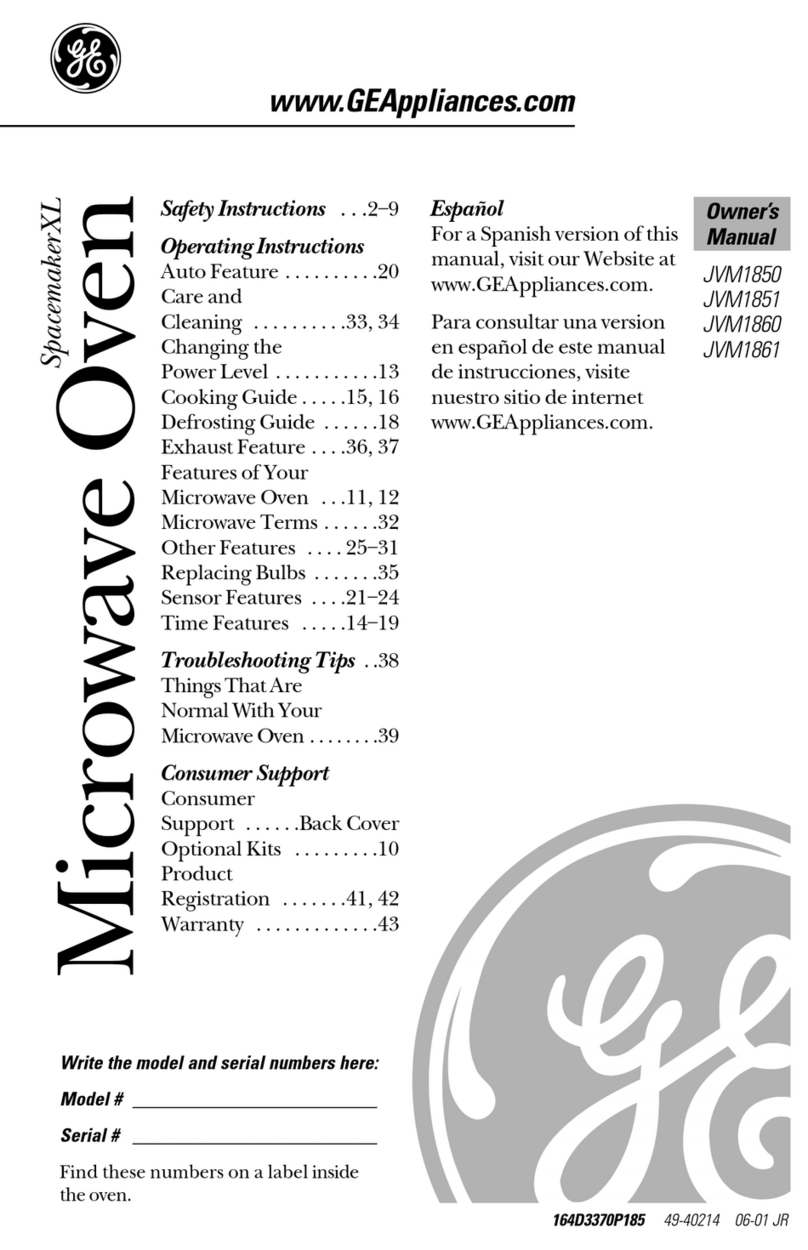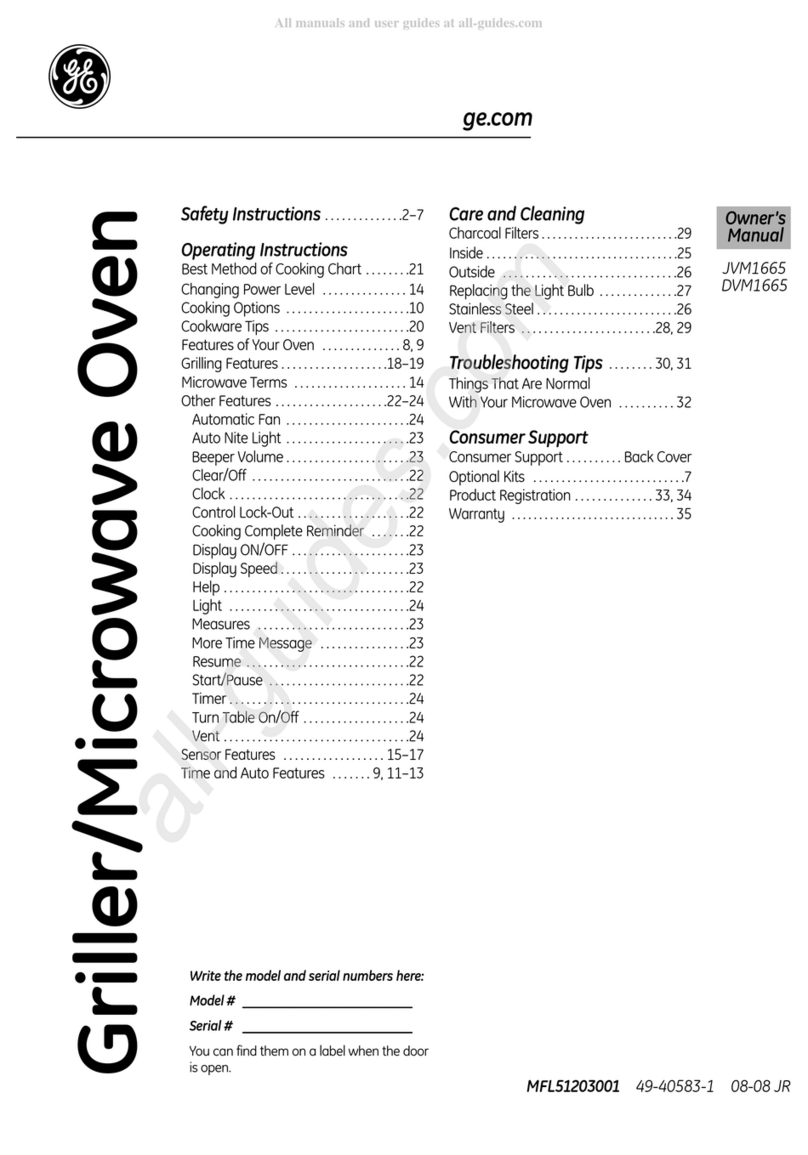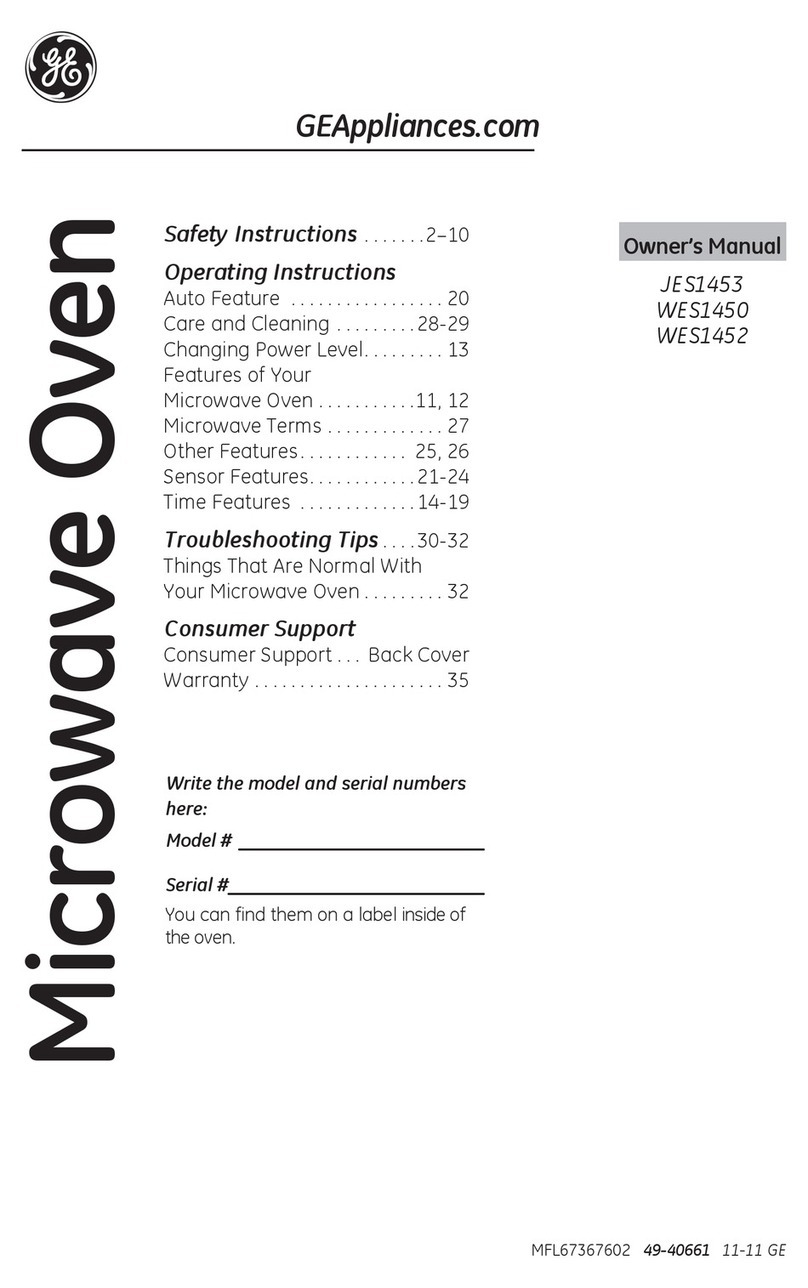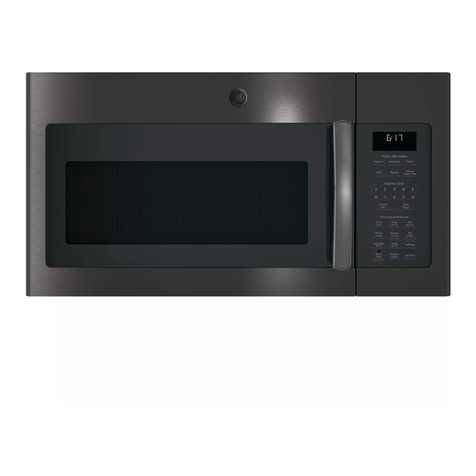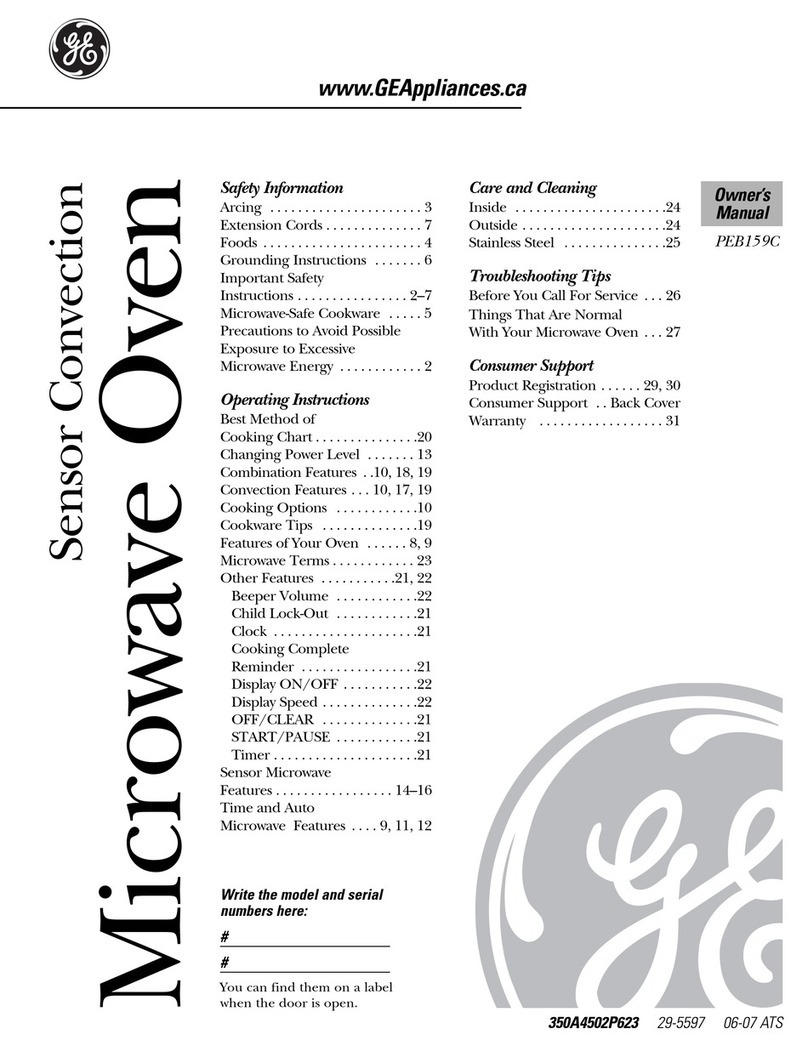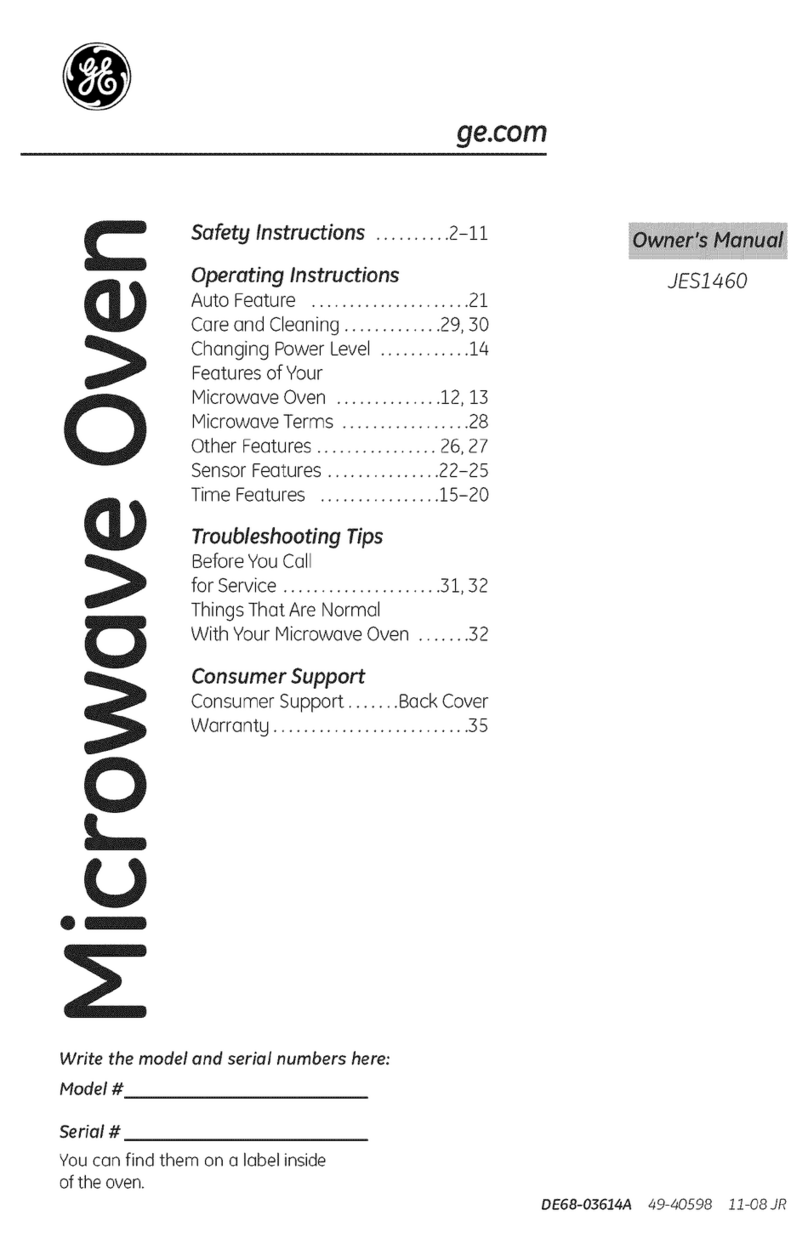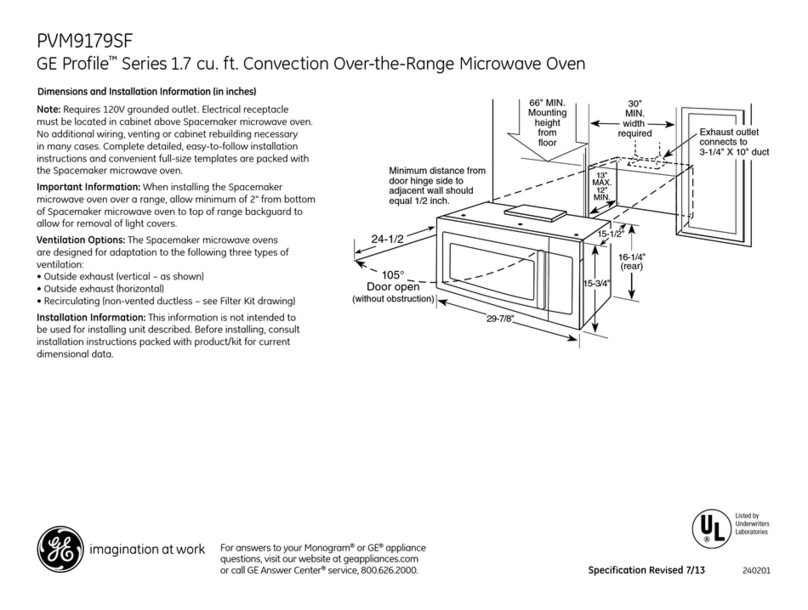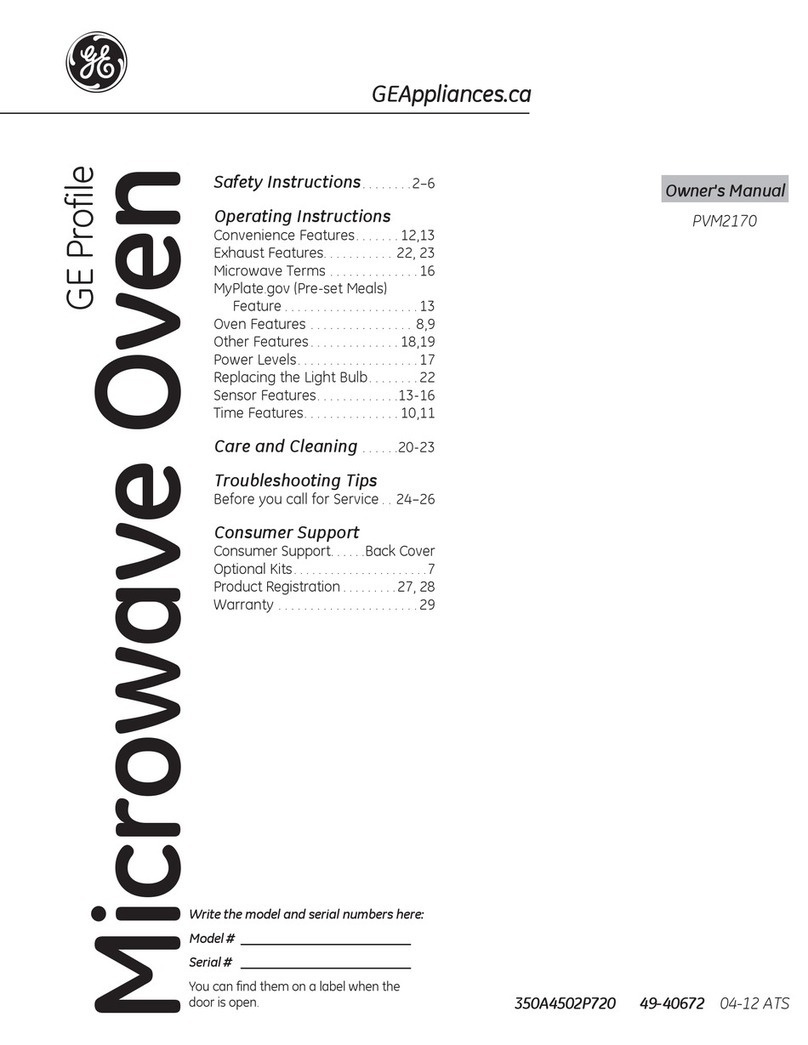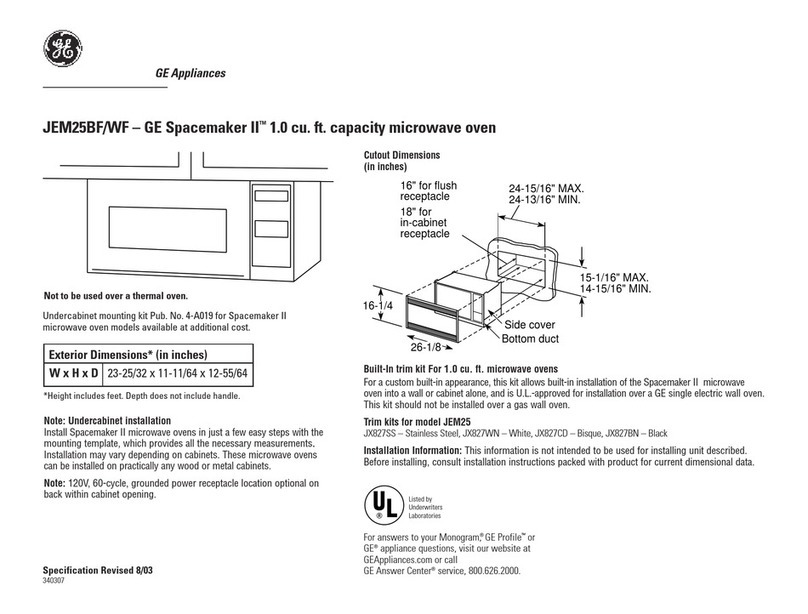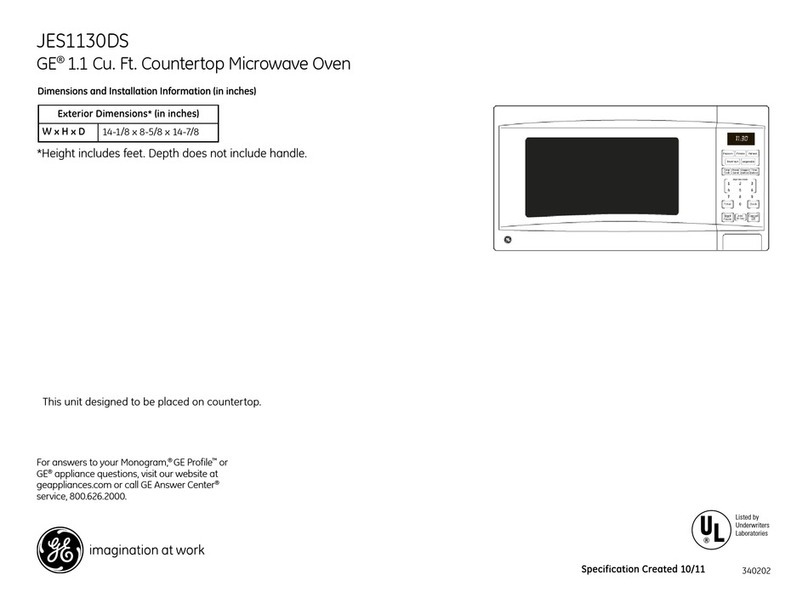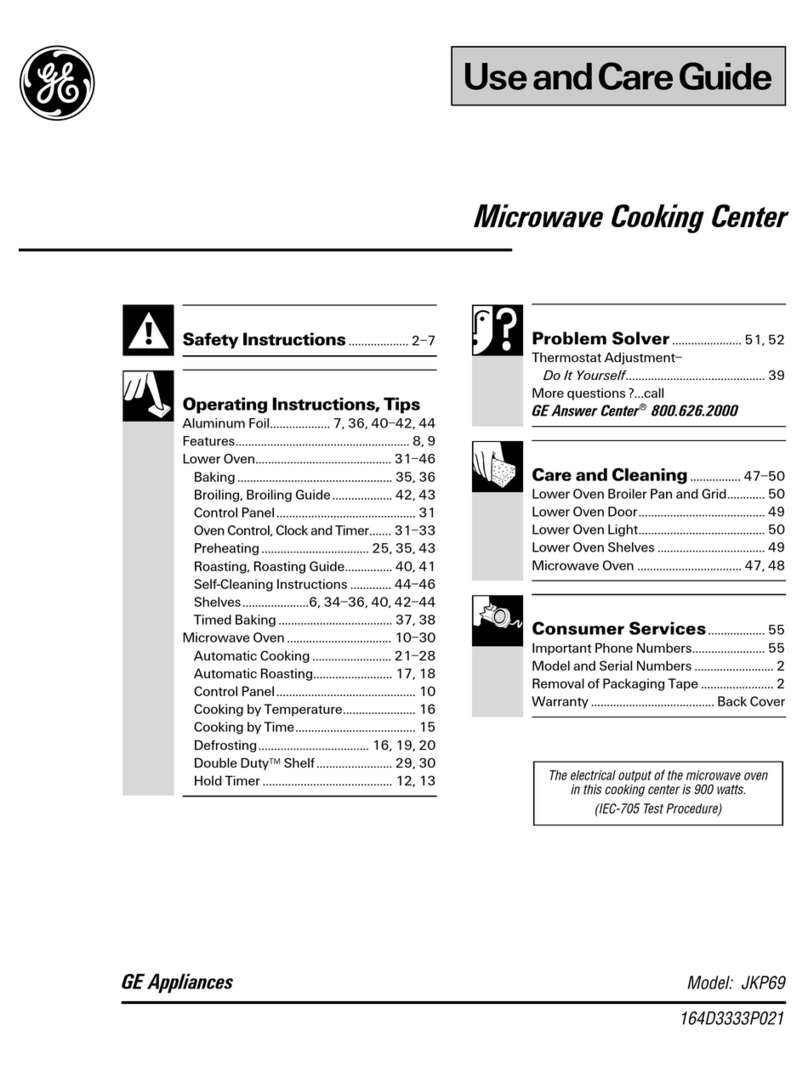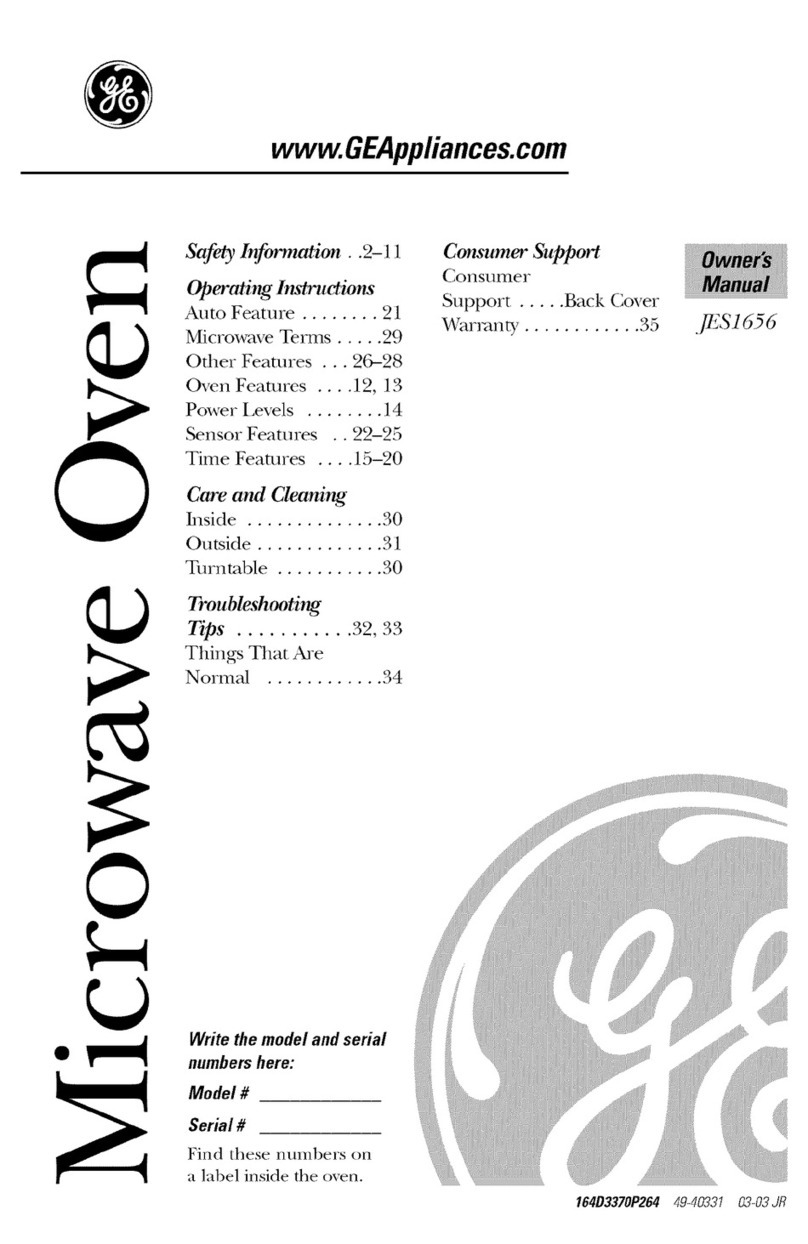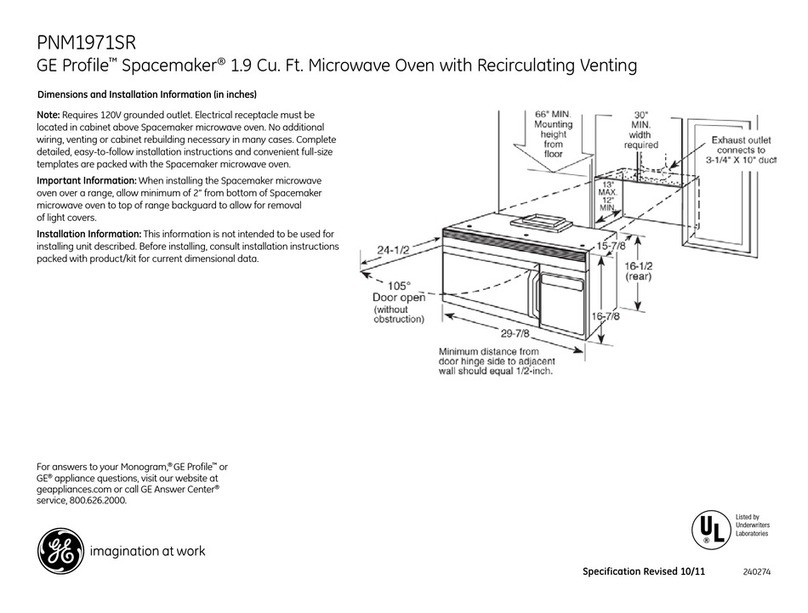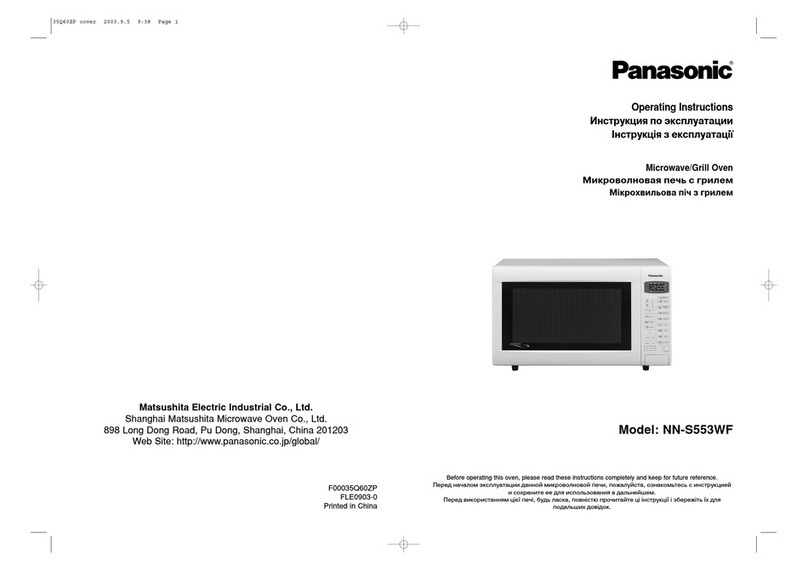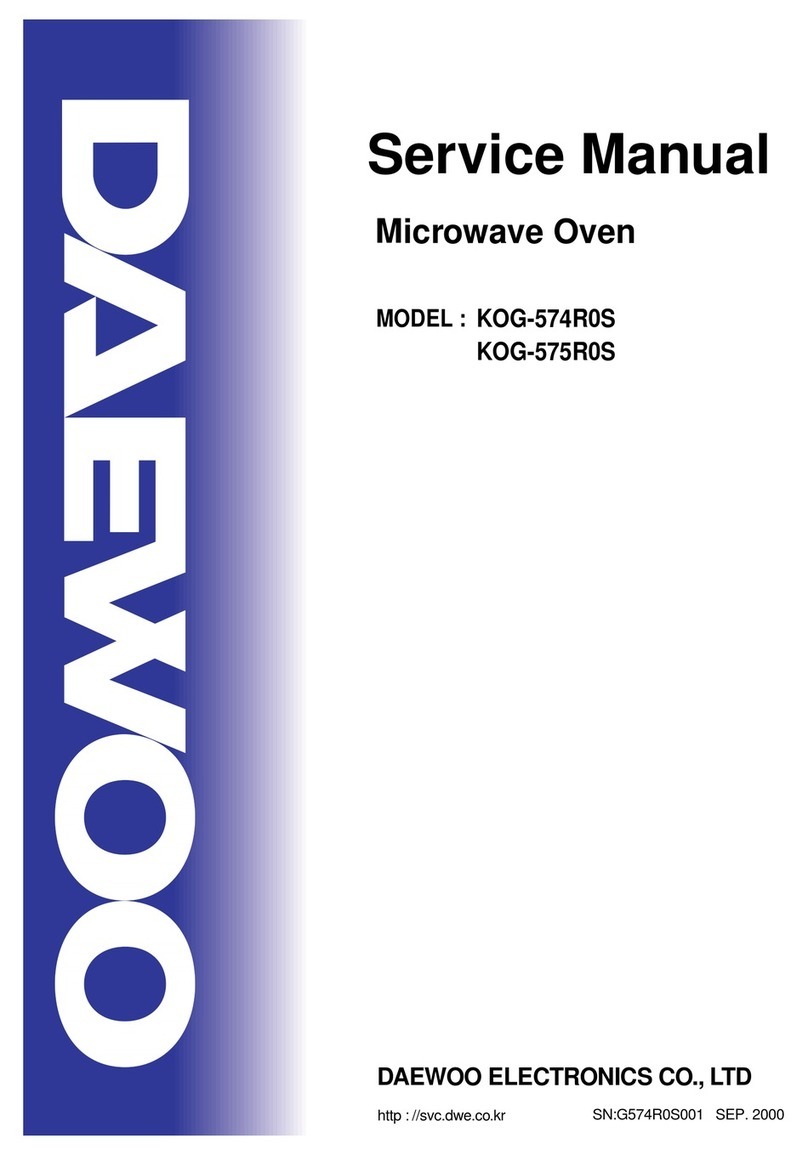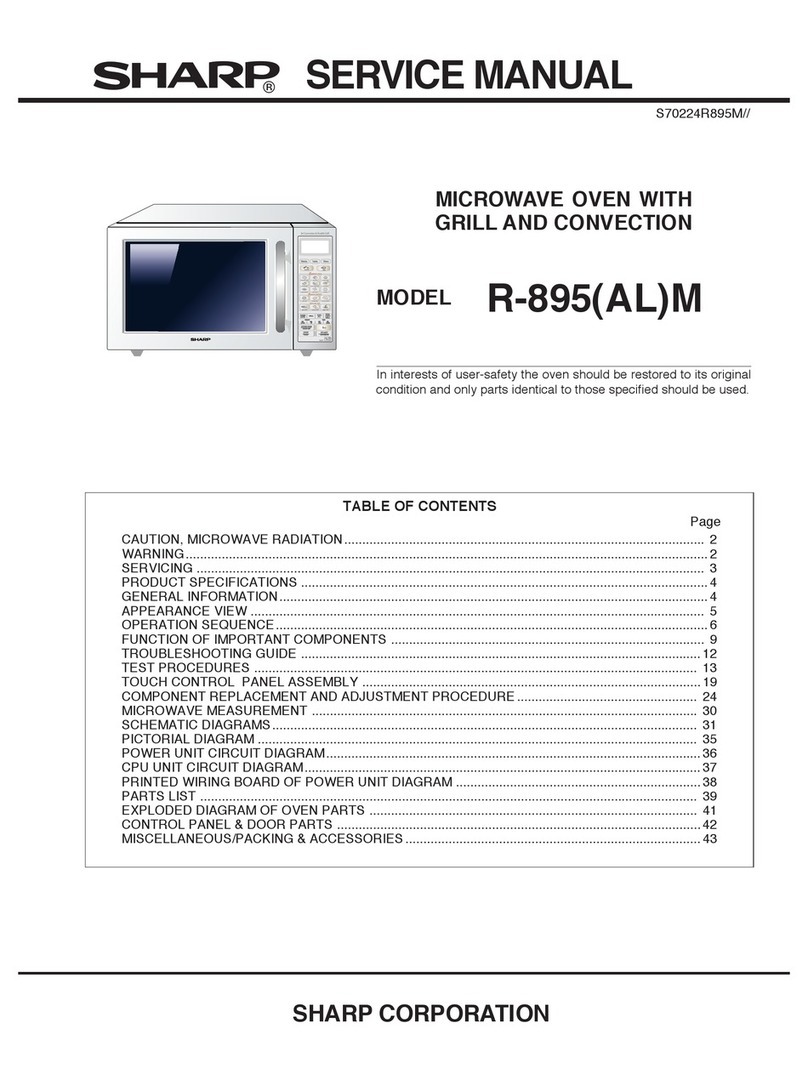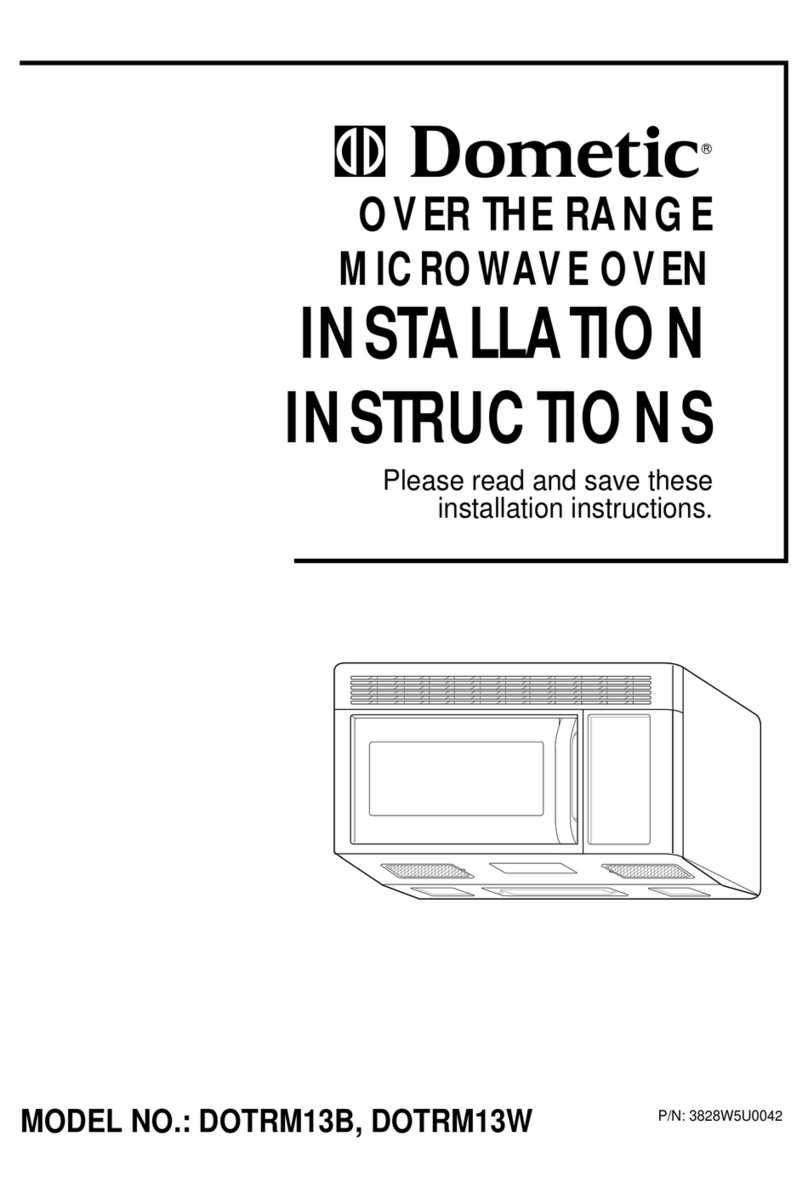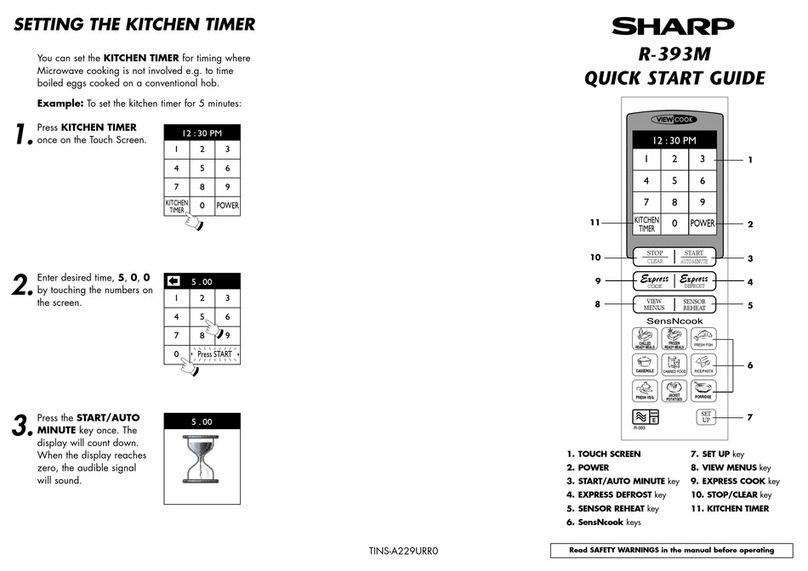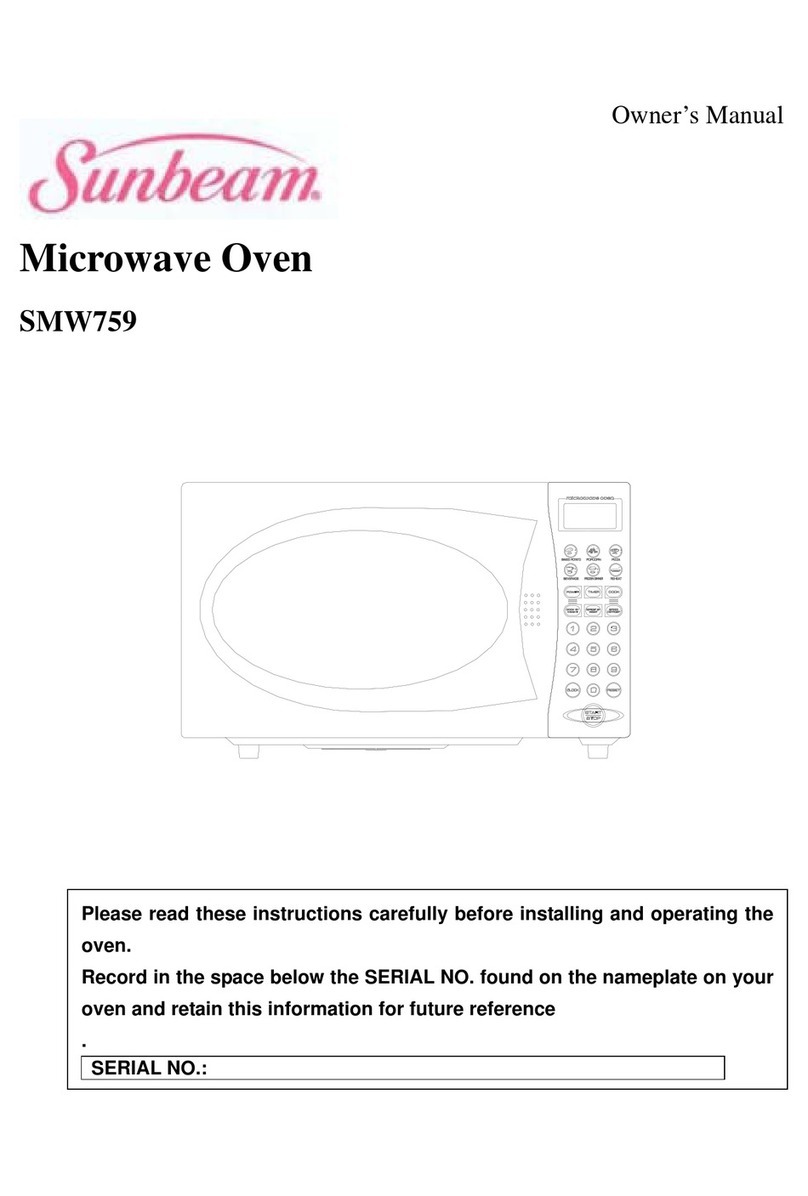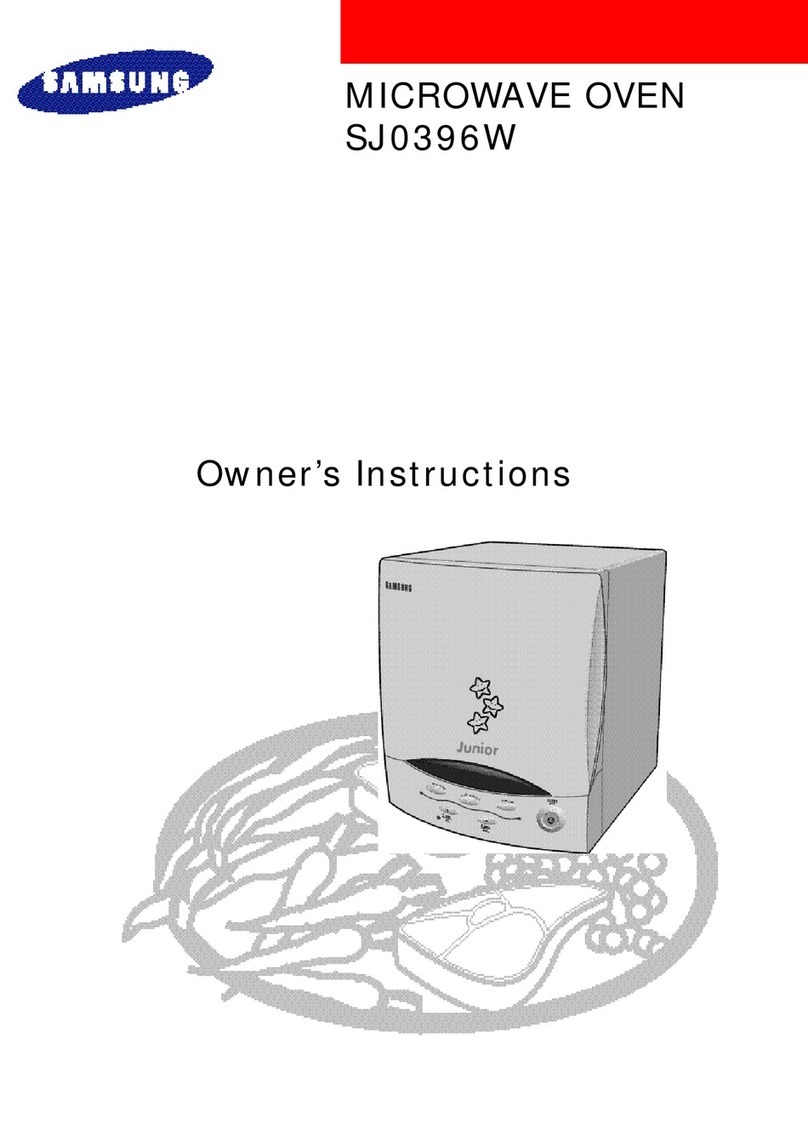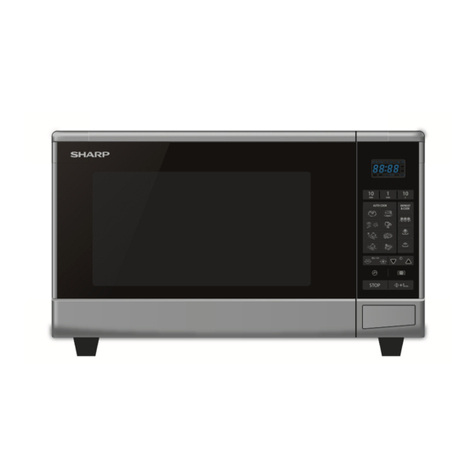5
Customer ServiceTroubleshooting TipsOperating InstructionsSafety Information
■
SUPERHEATED WATER
Microwaved water and other
liquids do not always bubble
when they reach the boiling
point. They can actually get
superheated and not bubble
at all.
Superheated liquid will bubble
up out of the cup when it is
moved or when something like
a spoon or tea bag is put into it.
To prevent this from happening
and causing injury, do not heat
any liquid for more than 2
minutes per cup. After heating,
let the cup stand in the
microwave for 30 seconds
before moving it or putting
anything into it.
■Avoid heating baby food in
glass jars, even with the lid
off. Make sure all infant food
is thoroughly cooked. Stir
food to distribute the heat
evenly. Be careful to prevent
scalding when warming
formula. The container may
feel cooler than the formula
really is. Always test the
formula before feeding
the baby.
■Don’t defrost frozen
beverages in narrow-necked
bottles (especially
carbonated beverages). Even
if the container is opened,
pressure can build up. This
can cause the container to
burst, possibly resulting in
injury.
■Spontaneous boiling—Under
certain special circumstances,
liquids may start to boil
during or shortly after
removal from the microwave
oven. To prevent burns from
splashing liquid, we
recommend the following:
before removing the
container from the oven,
allow the container to stand
in the oven for 30 to 40
seconds after the oven has
shut off. Do not boil liquids
in narrow-necked containers
such as soft drink bottles,
wine flasks and especially
narrow-necked coffee cups.
Even if the container is
opened, excessive steam can
build up and cause it to burst
or overflow.
■Hot foods and steam can
cause burns. Be careful when
opening any containers of
hot food, including popcorn
bags, cooking pouches and
boxes. To prevent possible
injury, direct steam away
from hands and face.
■Do not overcook potatoes.
They could dehydrate and
catch fire, causing damage to
your oven.
■When cooking pork, follow
the directions exactly and
always cook the meat to an
internal temperature of at
least 170°F. This assures that,
in the remote possibility that
trichina may be present in
the meat, it will be killed and
meat will be safe to eat.
